A wide variety of types of wine corks and bottle stoppers exist to preserve wine. Some winemakers — especially those who mass produce value wines — are using metal twist-off caps instead of corks. While cork type (or lack thereof) in some ways affects wine flavor over time, as well as our perception of taste, it’s also critical in protecting wines as they age. Some corks are more reliable than others.
Let’s take a look at the main types of wine corks below…
The Lowdown on Wine Corks
While cork has a multitude of uses, the wine industry is no doubt the biggest consumer of natural corks world-wide. Not all corks are created equal, and their primary purpose is to preserve the wine for long term storage.
Natural corks have been used for centuries due to the elasticity of their cellular structure. Cork is malleable to a point, with the ability to both contract and expand to a certain degree, creating an almost airtight seal in a bottle of wine. I say ”almost airtight” because some air can pass through natural cork since microscopically there are gaps within the cork structure. This can be either beneficial or detrimental to a wine dependent upon the type of wine being stored. Some wines age better with minute air exposure over periods of time, while others keep much better when exposed to no air during storage.
Both the type and size of cork used to store a wine is determined by the type of wine, the amount of pressure contained within the bottle, and the diameter of the bottleneck.
RELATED: Learn To Taste Wine Like a Sommelier With These Wine Tasting Steps
Wine Cork Fact: Did you know that Portugal makes over 50% of corks used world wide? Spain comes in second at about 30%.

Types of Wine Corks
Natural Wine Corks
“Natural Cork” is an umbrella term for different grades and styles of cork made from natural cork tree bark. These corks are 100% natural, and can either be one-piece cut from one sheet of cork bark, multi-piece, where at least two pieces of cork are glued together or colmated, where the tiny holes within a natural cork are filled in with cork dust and glue.
One Piece Natural Corks
These are ideal for the aging of wine long-term. They very naturally expand and remain strong over long periods. When removed from a bottle of wine, a one-piece natural cork will expand to 85% of its original size almost instantly, while regaining the rest of its original composure within the next 24 hour period.
Multi-Piece Corks
Multi-Piece Corks work well with wines that don’t need to be aged for long periods. These corks are often made with cork bark “scraps,” cut from cork bark areas that weren’t very thick to begin with.
Colmated Corks
Colmated corks are the middle ground for aging. Because a large portion of the tiny holes in the cork have been filled in, only small amounts of air can reach the wine. These corks are typically used for wines that shouldn’t be aged for more than 3 years.
Agglomerated Wine Corks
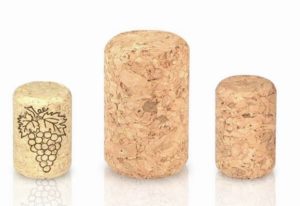
Think of agglomerated corks as hybrids. These are comprised of both natural cork bark material and synthetic parts making for a relatively dense cork composition. They are typically on the cheaper side and made primarily of natural cork bark scraps, cork dust, and glue. We have had some poor experiences with agglomerated corks when trying wines over 2 years old. Bare this in mind if you own or plan on buying wines that utilize agglomerated corks — for best results they should be consumed within the first year.
RELATED: Learn Everything About Tannins in Wine
Agglomerated “Twin Top”
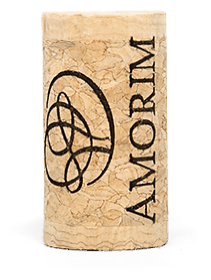
…Wine Corks with Natural Cork Ends
Also designated the “double disc,” these corks are a type of technical cork and are made up of two natural cork discs on either end, with the ”meat” or middle of the cork being completely agglomerated. These corks vary in quality and are ideal for storing wines that require medium aging since only small amounts of air can reach the wine.
Synthetic Wine Corks
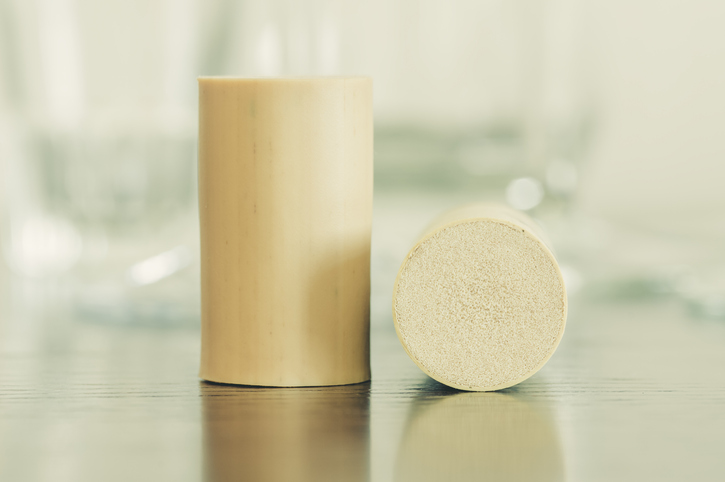
Synthetic wine corks have only begun to be used on a large scale within the wine industry. They are most commonly made from oil-based plastic, while certain synthetic cork manufacturers are also experimenting with utilizing plant-based polymers from corn and sugar cane.
Synthetic corks can be advantageous to winemakers looking to achieve a scientific degree of oxygen transfer. Since these materials can be crafted are various densities and from various materials, they can have set air transfer rates. At this point, it seems there are more positives than there are negatives to synthetic corks.
Positives
- Synthetic corks will last for long periods. Because the material used to make synthetic cork is not natural, wines will never be at risk of attaining cork taint.
- Wine can be stored standing up, as opposed to being laid down, since they don’t require the moisture from the wine to keep up cork integrity.
- Fixed and predictable oxygen transfer rates.
- Tight seal, anti-bacterial.
Negatives
- Since most synthetic cork material is comprised of petroleum-based plastic, some argue that it adds a chemical odor and or flavor to the wine being stored.
Glass Stopper or Glass Cork
Glass stoppers are made of durable, high-quality glass that forms an airtight seal to preserve the wine’s freshness and flavor. They are often used for premium wines and spirits and can be easily removed and resealed. Glass stoppers are gaining popularity due to their sleek appearance, reusability, and eco-friendly nature. However, they are still less common than the other types of wine closures mentioned previously.
Last but not least – it’s not a wine cork but it serves a similar function…
Metal Twist Off Screw Caps
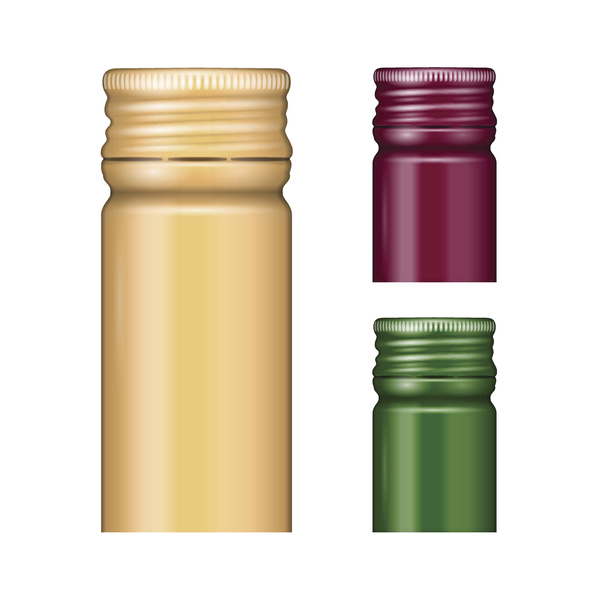
Twist off wine screw caps are being utilized more in New World wine regions, rather than old, where tradition is less of an issue. These corks, for the most part, achieve the purpose of storing a bottle of wine for medium to long term aging, as well as up-right. The biggest advantage of using a screw cap over a natural cork is that there is NO risk of cork taint over time.
Additional sources and photo credits: Cecchi Winery, Wikipedia, Wine Folly, Chicandjo, Amorincork, and Decanter.com.
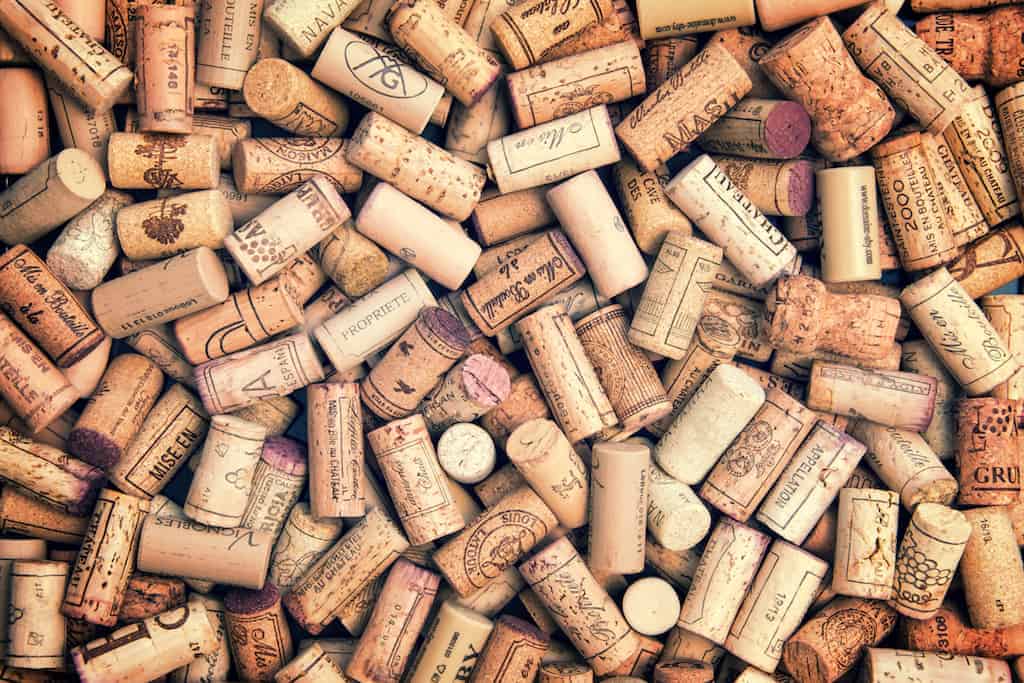
[…] https://www.winetraveler.com/wine-resources/types-of-wine-corks/ […]